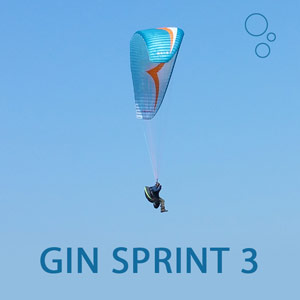
The Sprint 3 is Gin's new EN B paraglider, with an aspect ratio of 5.7, sitting between the Atlas and Carrera+ in their paragliding wing range. Flybubble's Carlo Borsattino flew the size M in punchy conditions. "It feels very solid and more like a higher aspect Atlas, than a lower aspect Carerra. It moves in a unified block. Easy launching, firm controls, moderate top speed but lots of accessible performance." Flybubble team pilot John Turczak flew the size L on the same day. "Entering thermals, once you bank the wing it moves very easily into them. The wing feels like it wants to be in the thermal." Read Carlo and John's reviews of the Gin Sprint 3 paraglider.
Sprint 3 paraglider review by Carlo Borsattino
I flew the Gin Sprint 3 size M (85-105 kg at 93) for 5 hours in strong thermic conditions with a moderate base wind. The air was pretty punchy at times, with a some pilots having sizeable collapses. A local ex British team and PWC pilot, not known for being faint-hearted, commented that he found it a bit sporty at times on his competition wing. However, the Sprint 3 felt very solid and reassuring throughout; more like a higher aspect ratio Gin Atlas than a lower aspect Gin Carerra.
On the ground the Sprint 3 is much easier to hold down than the Atlas, which has a tendency to auto-launch when there's a bit of a breeze. The Sprint 3 is very easy to launch: it doesn't have a tendency to whip up and it doesn't drop back at all. The lack of roll and pitch makes the launch run easy. Just trot along, and then you're flying.
In the air, the wing moves as a unified block, with little snaking or jelly-fishing. Gin's description of how the Sprint 3 behaves in active air is fair: it generally wants to stay above the pilot, and doesn't tend to pitch and roll around too much.
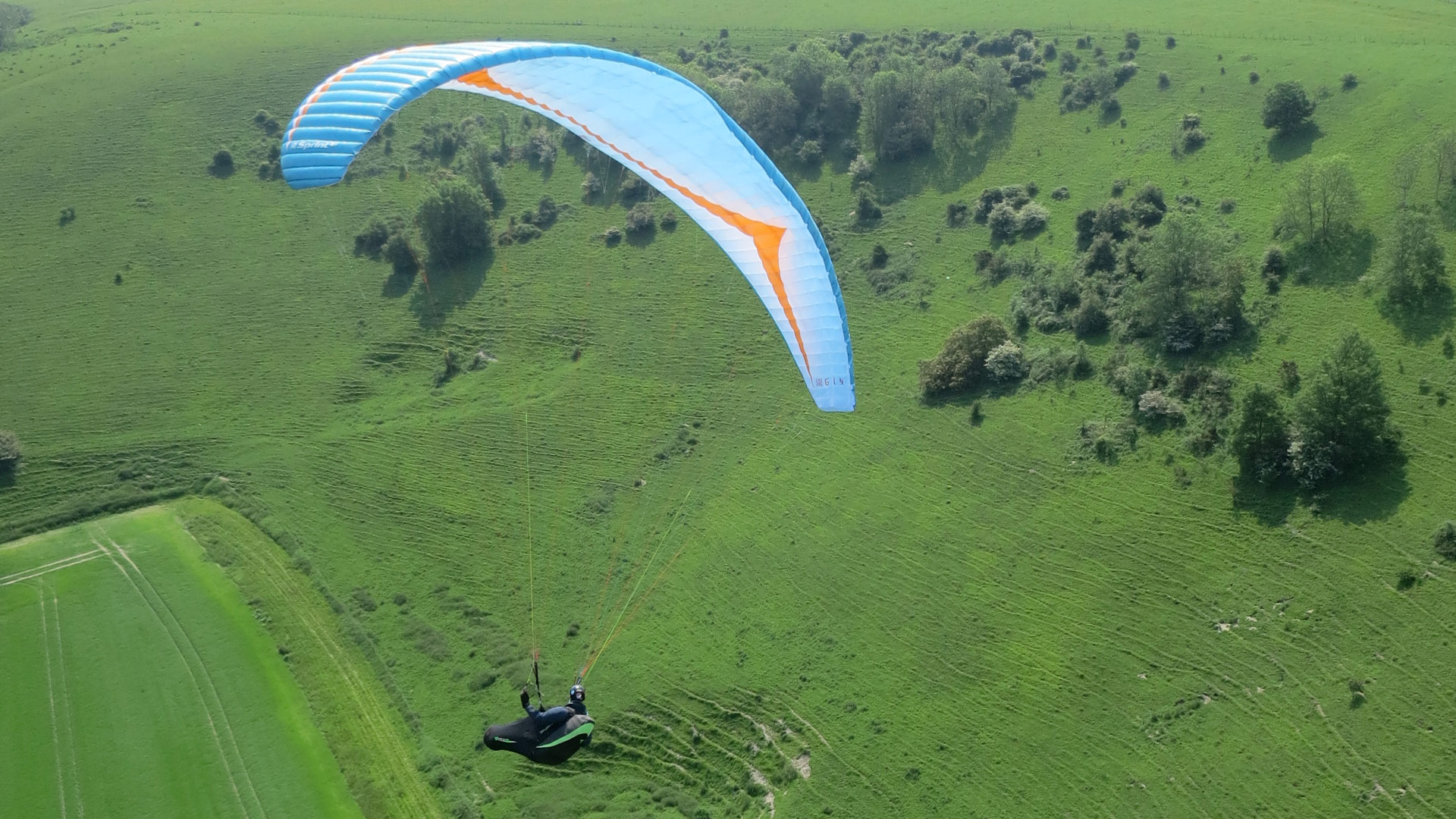
I flew on full bar for extended periods trying to push out against the headwind. The Sprint 3 is very solid at full bar, even through the punchy stuff; other pilots flying next to me were only comfortable using less bar. The speed range feels a bit short, with physically limited travel; I was locking out the pulleys at 3/4 to 4/5 of my normal speedbar travel. At a rough guess from GPS speeds, it seemed to give an increase of around 10 km/h. It's as if Gin has decided to avoid the collapse-prone twitchy end of the scale altogether and keep pilots in the safe zone; I personally think this is a good thing, and commend Gin for putting pilot safety before marketing.
The handling of the Spring 3 feels somewhat like the Atlas to me: easy, progressive, reassuring, with firm brake pressure. It's very different to it's predecessor, the Sprint Evo, which had lighter, sharper handling with quicker, tighter turns. The Sprint 3 is definitely more dampened, not as sensitive to feedback or 'talkative' as the Sprint Evo. Similar to the Mentor 4's handling, although perhaps slightly less dampened. Some pilots might find the Sprint 3's handling a bit too steady for their liking, whilst others will find it comfortably reassuring and love it. During my 5 hour flight on the Sprint 3 I had opportunity to see how it handled in a wide variety of wind, thermal and soaring conditions - from breezy and punchy to light and scratchy - and found it to be an excellent all-rounder.
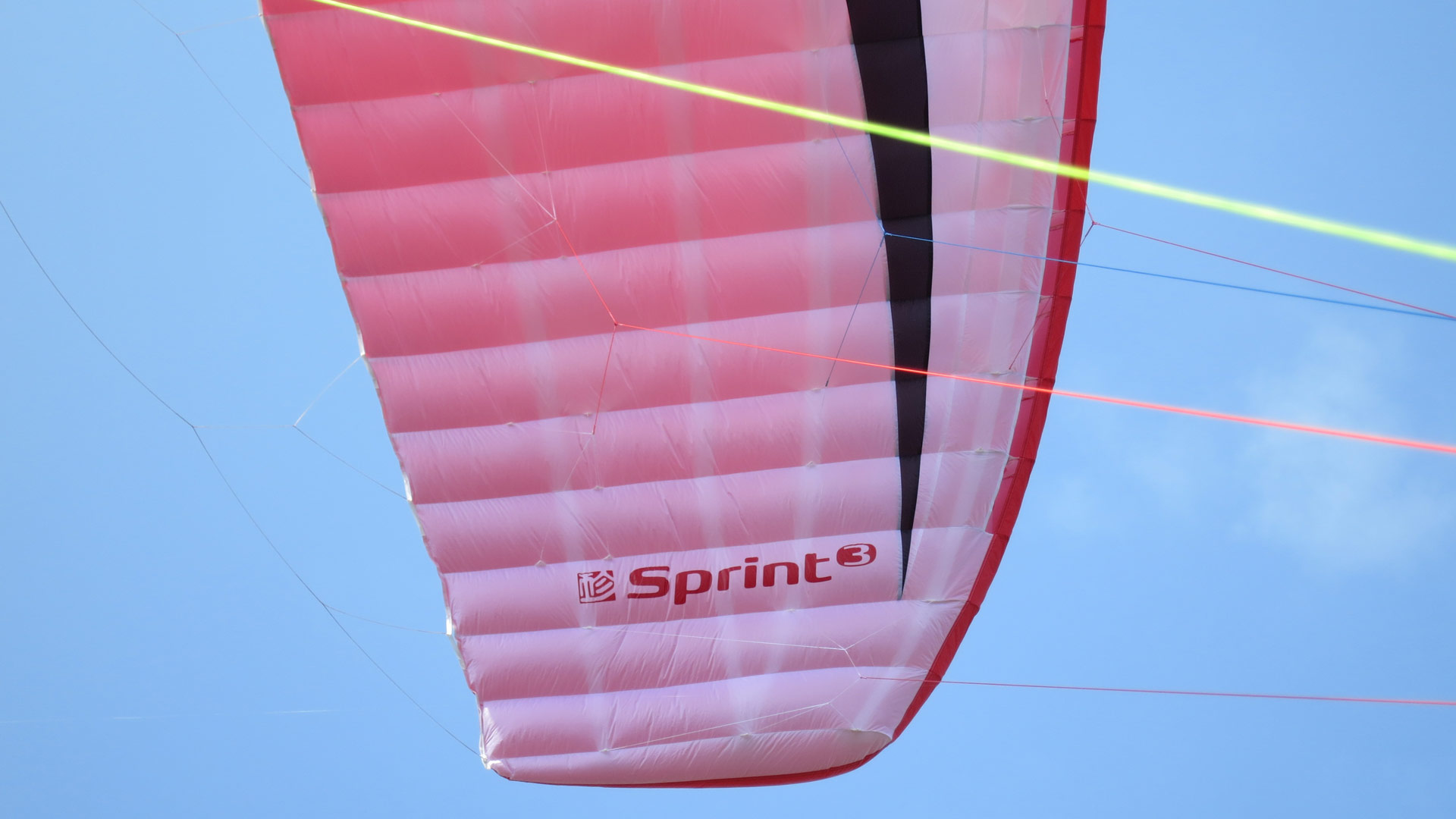
Performance feels very good in the XC Class (high-end B, B+). It doesn't quite match the Carrera/Carrera+ (or other similar 'hot B' wings) but anyway these wings place significantly higher demands on the pilot, so we classify them as a Sports Class wings - next bracket up. The Gin Sprint 3 performs very well but does not push the envelope of B class performance - it's comfortable and sensibly midfield, a true XC Class wing.
In terms of pilot demands, I'd say the Sprint 3 is slightly below the middle of the gap in Gin's range between the Atlas and the Carerra+. In the middle in terms of performance, although it's very usable, accessible performance. The ratio of performance to pilot demands is excellent, so many pilots will happy they are on it when the going gets rough.
See the test flight track
Find out more about the Gin Sprint 3
Sprint 3 paraglider review by John Turczak
I flew the large (95-115 kg flown at 108) Gin Sprint 3. The wing is 29.2m2 (flat area) and is rated as EN B. I flew the wing at Firle (a small north-facing ridge) in a NNE in windy conditions with 2 m/s thermals.
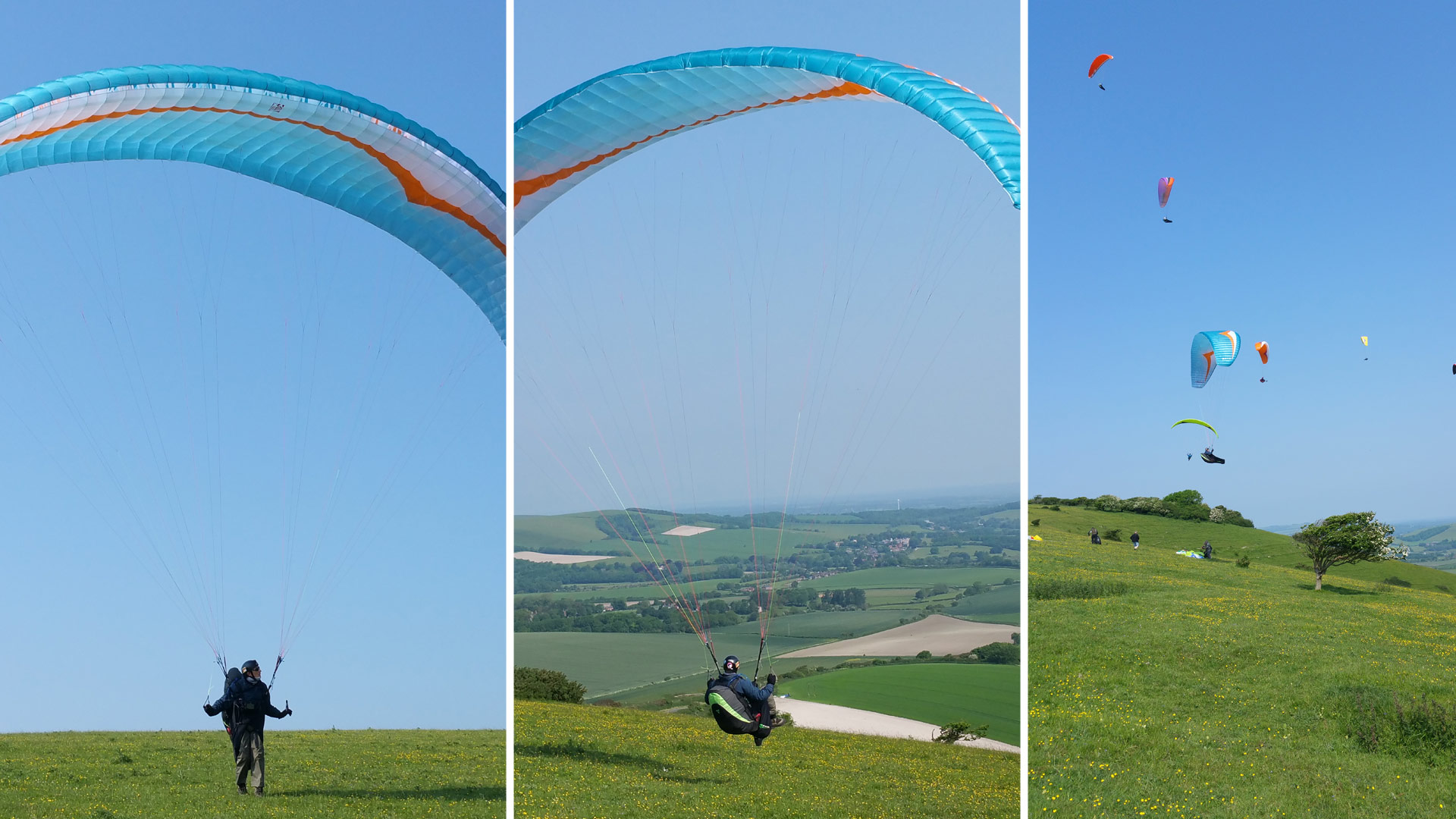
Inflating the wing, I was pleasantly surprised in the way the wing came up. Before launching, the wing had no tendency to self-inflate and so remained stably on the ground waiting for my inputs. I did a straightforward launch just easing up on the inner A lines. The wing came up smoothly above my head with no over fly that I noticed. Also there was no sudden vertical surge trying to pull me off my feet. The wing then easily stayed above my head with minimal input.
The brake handles are clipped onto the risers using magnets. The brake lines have been designed so that you only need small inputs to control the wing.
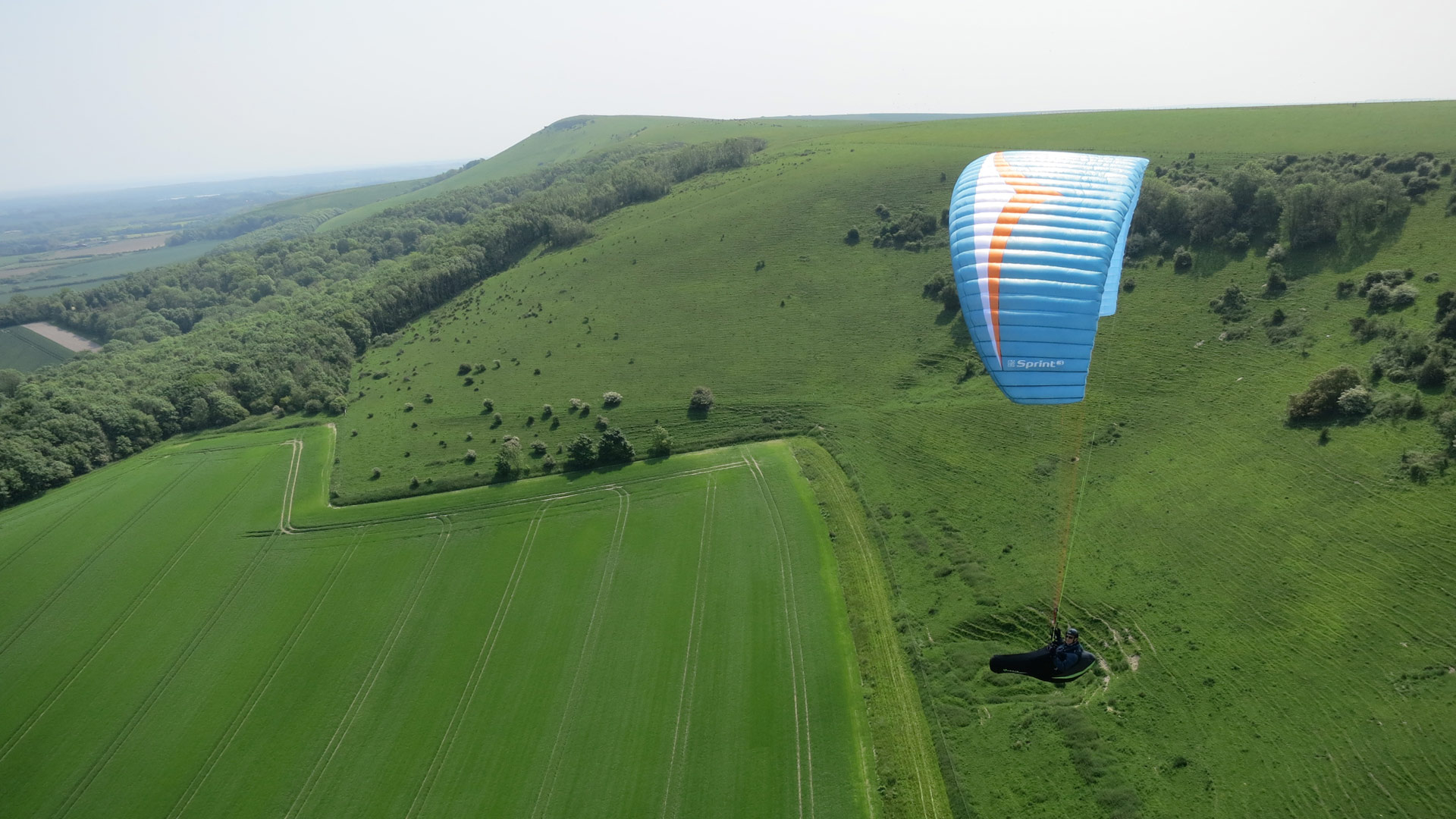
In the air, the wing moves smoothly into lift with no feeling of excessive pitch. There was no feeling of being 'jostled about' in the air. The Sprint 3 gives a very smooth glide.
Entering thermals, once you bank the wing it moves very easily into them. There was no feeling of 'fighting' with the thermal. Quite the opposite the wing feels like it wants to be in the thermal. The wing responds well to small inputs. Weight shift followed by small brake inputs has the wing turning smoothly with no noticeable lag.
Flying on trim the wing feels solid and copes with the various bits of small turbulence without giving you the feeling that you need to grab the brakes.
Speed bar goes on with little effort. So you don't feel strained in any way flying with bar. The wing feels solid on bar with no attention on what the wing is doing. I was trying to judge the speed increase on the GPS. Flying with about 2/3 bar (Brummel hooks just below the carabiners) this seemed to give a 7-10 km/h increase. The glide was very smooth. And the wing responds well to rear riser steering while on bar. I took the glide out until I hit a thermal and then released bar and went directly into a turn. The wing did that easily and smoothly.
The As are split into two distinct sections. The outer A on its own line and then two inner A lines. The configuration makes it very simple to identify the outer As for Big Ears. And pulling them in the big ears come on and stay in with minimal excess flapping. Once in, the big ears stay in, so there is little strain on your arms to keep it in. Easy to control and flight in a straight line or turn with weight shift. I added bar to this and again very stable and easy to turn. When you release the As the Ears stay in and require a couple of solid pumps on the brakes to get them out.
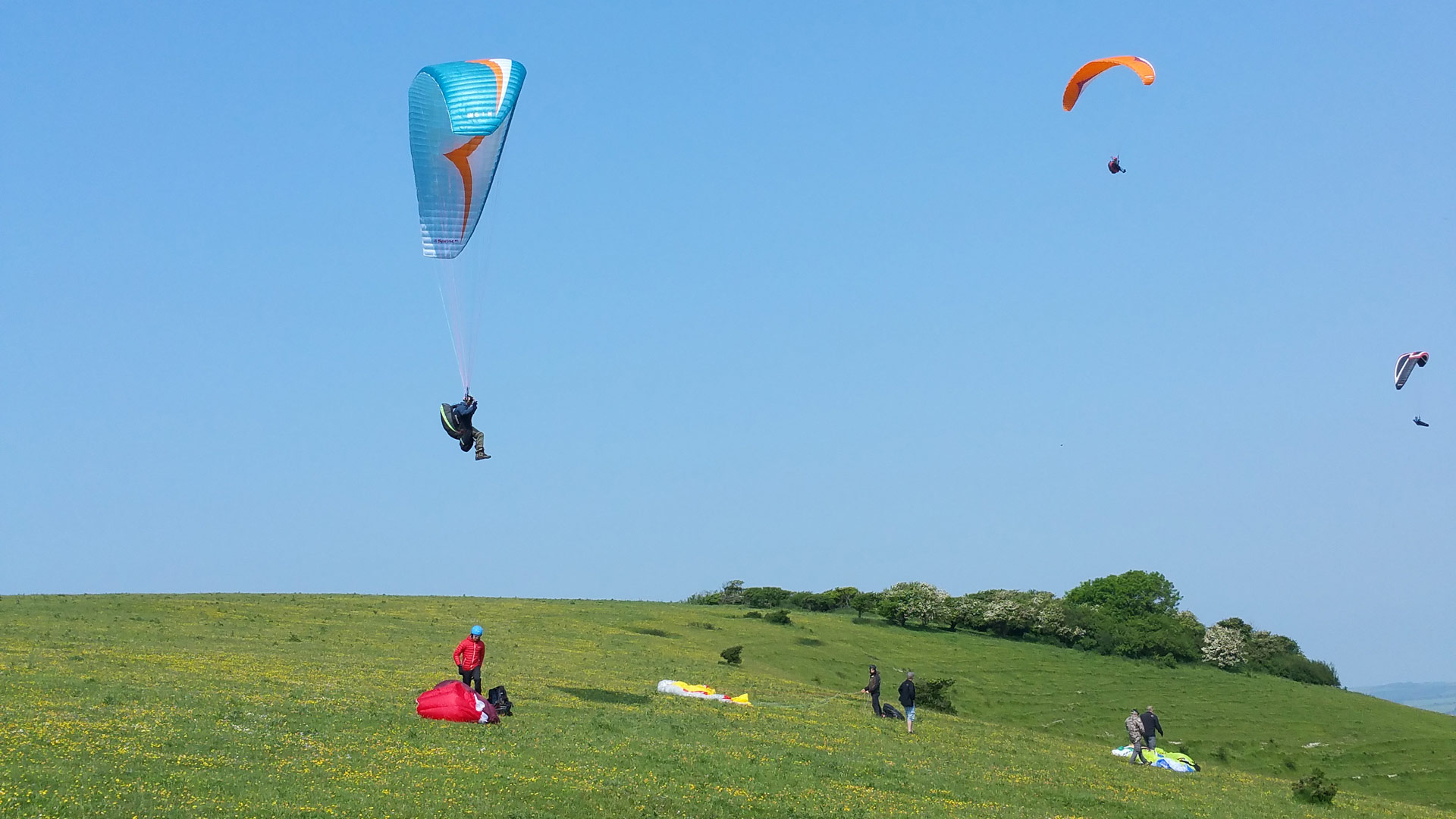
Landing was again very straightforward. The wing fairly effortlessly stays flying over your head. And the shorter brake travel makes stalling it to get it down is very simple. No need for wraps.
This is what Gin say about the wing: “The Sprint 3 is a well-balanced wing that inspires confidence. The wing stays neutral above the pilot at all times, whether during take-off or on entering lift. The Sprint 3 has a natural flying character that helps you first find lift and then stay in it. Despite the comfort, the wing is never dull and the turn is direct and lag-free. Long glides are a breeze too, thanks to a useful reserve of speed.”
I would have difficulty to fault them on those points.
So for a pilot looking for a wing with performance in the B range this ticks the boxes.
Find out more about the Gin Sprint 3
Brought to you by Flybubble
Want to see more? There’s no better way to support our efforts than buying from us. We’ll ensure you get great service! Choose from our great range AND enable us to produce more videos and articles to benefit the freeflight community.

